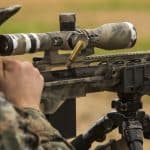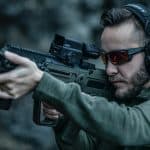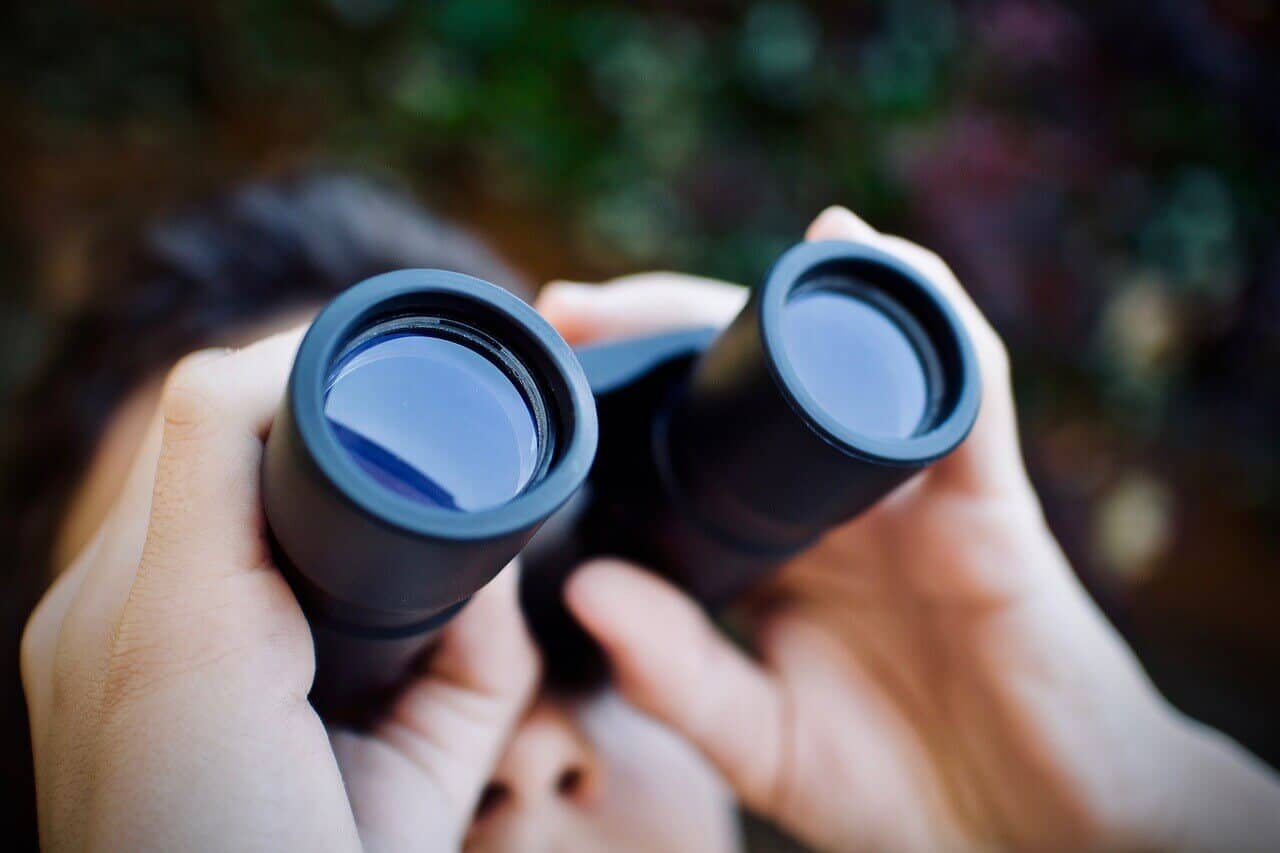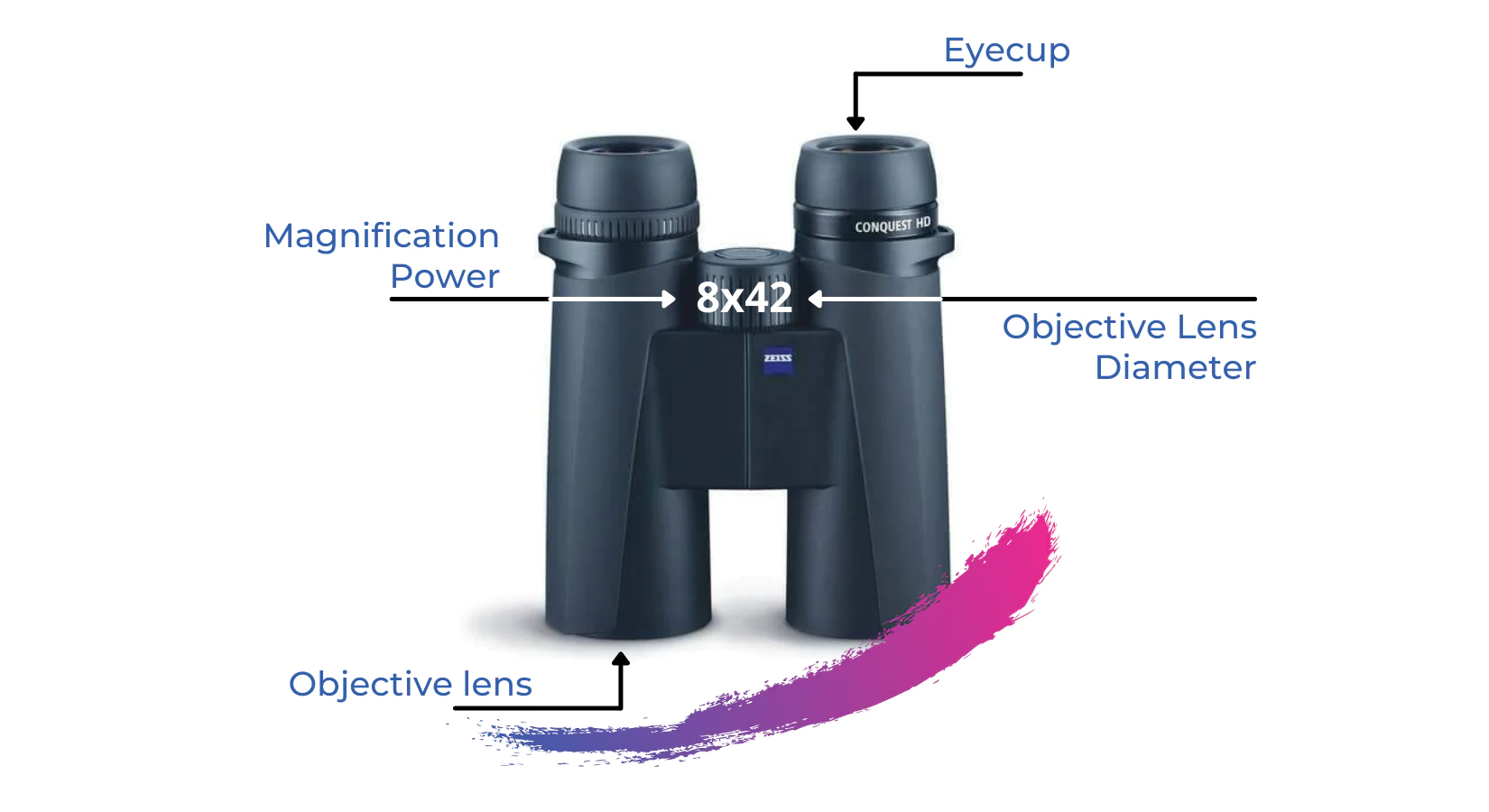If you happen to love stargazing or bird-watching or simply wish to take a closer look at the moon, then binoculars are probably your favourite thing in the world. Without so much as moving a muscle, you get to see things up close. Even if none of these activities tickles your fancy, you can still make good use of a pair of binoculars on that sightseeing trip.
But, what’s the working mechanism of binoculars? In particular, autofocus binoculars are all the rage these days. So, how do autofocus binoculars work? We will take a close look at them in this piece.
Here is a list of our top 3 auto focus binoculars:
- Steiner Military 8×30 Waterproof Binoculars
- Bushnell 10×50 Waterproof Binoculars
- Steiner 7X50 Navigator Pro Binoculars
The working mechanism of binoculars
Binoculars make use of lenses that are fitted at the end of each barrel. One is the objective lens that focuses on the object being looked at, and the other is the eyepiece lens which provides the final image to the human eye.
The objective lens receives light from the object that the user is viewing and passes it into the eyepiece lens to form a clear image. This is then magnified by the eyepiece lens for the user to view things at close quarters.
The most common type of binoculars is prism binoculars. They make use of convex lenses both for the eyepiece and objective lens to create a prism system that is incorporated into the optical path. As a result, the inverted image produced by the objective lens is rectified and the user is able to clearly look at their intended object.
The prism binoculars are further classified into Porro prism binoculars and roof binoculars. Yet more types include wide-angle binoculars, foldable binoculars, waterproof binoculars, focus-free binoculars, high-powered binoculars, and night vision binoculars.
What are autofocus binoculars?
Manufacturers use a number of different terms for them. They are called self-focusing binoculars, permanently focused binoculars, and constant focus binoculars. These types of binoculars are permanently adjusted for a medium distance. This is normally 30 to 60 feet.
Autofocus binoculars are especially well-suited for use in a sports arena/stadium to witness exciting competitions up close. If this is what you will be mainly using your binoculars for where you don’t have to stare through them for long periods of time, then you will undoubtedly be very happy with the result that you get with them.
Autofocus binocular design
If you are interested in this particular type of binoculars, they come in two different autofocus designs. In the first one, there is no option for adjusting either barrel of the binoculars. The second design often gets mistaken for an individual focus pair of binoculars because you have the option of adjusting and focusing both barrels separately.
Which design you should go for will depend on your usage frequency. If you won’t be using your pair of binoculars very frequently, then the first design should work for you more or less. However, on the whole, the second design is much easier and pleasurable to use while the provided view will also be significantly better.
Related: Master how to repair binoculars at home even if you have never done it before
Do autofocus binoculars really focus automatically?
The simple answer to this question is “no.” Technically speaking, autofocus binoculars do not have an inherent automatic or self-focus mechanism. So, in that sense, the term “autofocus binoculars” can even be considered somewhat misleading.
More accurate terms would be focus-free binoculars, fixed focus binoculars, or always-in-focus binoculars. Generally speaking, there is no focusing mechanism in these types of binoculars because they are designed to possess a fixed depth of view which is usually from around 30 feet up to infinity.
You can say that these binoculars cover a very big hyper-focal distance. In other words, everything from about 30 feet going up to infinity will remain in focus with these types of binoculars. However, these instruments normally come with a diopter adjustment that can be made to the eyepieces, which means that minor alterations can be made to the focus of such binoculars.
Individual focusing binoculars
These types of binoculars are somewhat different from fixed-focus binoculars in that they do not possess a single-focus wheel or knob which allows for simultaneous adjustment of the focus on both barrels. This is the normal mechanism that is in use and that most people are familiar with. However, individual focus binoculars work on a somewhat different principle.
Each eyepiece has a diopter adjuster that allows the user to adjust the focus of each side independently of the other. That is, you can adjust the focus of one eyepiece and not the other if you want to. This is not the case with the normal single-focus wheel which only allows for adjustment of both eyepieces together.
One thing that you need to keep in mind here is that the diopter setup is there so you can calibrate the binoculars to your individual vision and adjust for any differences that you may have in your right and left eyes.
So, it is possible to make small alterations to the focus using the diopters and modify the focal distance somewhat. However, you would not get the same type of close-range that normal central-focusing binoculars are able to give you.
Pros and cons of autofocus binoculars
As with anything, autofocus binoculars come with a number of positives as well as a few negatives. Whether the pros outweigh the cons or not will ultimately depend on what you will be using them for.
Pros
Following are the advantages of using autofocus binoculars to see things.
- Autofocus binoculars have fewer moving parts. This makes them easier and cheaper to manufacture while they are also more durable and robust. Furthermore, it is easier to make them waterproof as well as dust proof. All in all, a pair of fixed-focus binoculars is an ideal instrument to use in extreme weather conditions and harsh environments.
- Fewer parts mean that fixed-focus binoculars are lighter in weight compared to other types.
- Since no further alteration and tinkering is needed once you have set autofocus binoculars according to your vision, it makes using them easier compared to other types in which you have to adjust the focus every time you look at something. This is great for objects that tend to have an erratic and swift pattern of movement.
- The absence of a focusing knob makes autofocus binoculars much less complicated and easy to use. This can be great for the kids and elderly individuals and also if you happen to be wearing thick gloves. Hence, they are ideal for use as skiing binoculars as well as for marine use in cold weather.
- Binoculars of the focus-free variety come with a deep viewing field.
- If one of your eyes is significantly weaker compared to the other, then autofocus binoculars may be ideally suited to you because they come with a diopter adjusting mechanism.
Cons
Autofocus binoculars have the following negatives.
- Because of their fixed focus, autofocus binoculars normally do not have a close range. They will most likely begin to focus from around 35 to 40 feet. This is why they are more popular for use in wide-open spaces like an ocean or a stadium where some sporting competition is taking place.
- Autofocus binoculars having a fixed focus often rely on the flexibility of your eyes so that the image can be kept clear and fully in focus. Younger individuals would not have much problem with it. However, individuals over the age of 40 might face a lot of strain on their eyes. This is because as you advance in years, the ability of your eyes to focus also starts to slow down.
- Once you adjust a pair of autofocus, fixed focus, or self-focusing binoculars according to your own vision, sharing them with someone else becomes unsuitable unless they happen to have the same vision as yours.
Autofocus binoculars buying guide
Finding a pair of binoculars that will be perfect for you may pose a bit of a challenge. Therefore, we have suggested some tips to make the process easy and smooth for you.
- If you will be using your binoculars for extended periods of time, then you should go for a model that will enable you to adjust and set the focus according to your vision.
- If you would like an instrument that can fit in your pocket and you can carry it around easily, then we suggest you go for field glasses that are cheap and small and can magnify things by as much as 8 times.
- If you are an avid stargazer or birdwatcher, then you should invest in an instrument that is of better quality and will probably be somewhat expensive.
- Do not go for online shopping before trying a few models in a shop. See how you like a particular model and how it can be adjusted to your vision. Only then should you buy a pair of binoculars online.
Conclusion
The aim of this piece was to help you understand how autofocus binoculars work and for what situations are they ideally suited. We hope you were able to get all the answers. Cheers!

An optics enthusiast – I love bird watching as well as wildlife. Originally from South Africa, I moved to the UK at a young age. I love reviewing the latest binoculars as well as traveling. I work as a comms consultant during the day. My plan is to travel across the world so building up to that goal.





